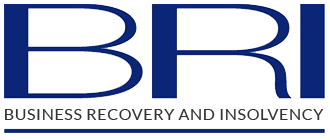17 March 2022: A Creditors’ Voluntary Liquidation (CVL) is a very technical process which requires a high level of expertise and licensed insolvency practitioners to administer. From an outside view, and on the most superficial level, it may appear that a liquidator arranges for the sale of an insolvent company’s assets and then, after drawing expenses and fees, distributes the remainder of the proceeds to the creditors. Whilst selling the assets and distributing the proceeds to creditors is one of the main purposes of a liquidator, there are many other duties and tasks that need to be dealt with and, almost always, there are numerous other factors outside of our control that can further complicate the liquidation process. Furthermore, during the course of our work, we must comply with many statutory requirements and undertake certain responsibilities which those outside of our profession will no doubt be unaware of.
Just as an example, when a company enters CVL, a liquidator is required to collate employee pay information from a company’s records in order for the Redundancy Payments Service (RPS) to assess claims from redundant staff. Where those claims differ from the contents of the records, we can become drawn into protracted correspondence with the employee and the RPS. Due to the often emotive nature of situation, these interactions can be difficult and require careful diplomacy on our part, with due sensitivity to the circumstances of the claimant. Similarly, discussions with creditors as regards purported claims of title over a company’s assets can be resource-intensive and, again, require a considered, delicate approach; acknowledging frustrations whilst insisting that claims are supported with formal documents before agreeing to release assets.
Also, our enquiries are, of course, reliant on cooperation from third parties including corporate entities to whom there is no financial benefit in providing us with the information we have requested. It is understandable that providing copies of documents or historical details to an insolvency practitioner, free-of-charge, isn’t at the top of their priority list, which often means that we need to submit a number of requests before the information is finally received. Inevitably, this can cause delays in progressing liquidation cases, despite all of our best efforts.
As no type of business is immune from financial difficulties, insolvency practitioners deal with a diverse range of traders and companies – from coffee shops to suppliers of riot armour. This naturally means that we encounter an equally wide range of assets that must be dealt with appropriately, with due regard not only to achieving the best result for creditors but, sometimes, having to ensure that we strictly comply with legislation, governing matters of public safety and arranging the correct form of insurance required. Thankfully, where we have potentially hazardous items to deal with, we are able to draw on the expertise of experienced agents that we instruct to act on our behalf.
The challenges of the liquidation process – including working with clients who may be extremely anxious – must be met with compassion, open-mindedness, discipline, and sound judgement that comes from experience and knowledge. Fortunately, the staff at BRI are highly skilled when it comes to meeting those challenges and delivering an attentive, efficient service even at times when the unexpected happens or problems present themselves.
